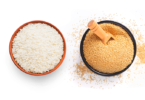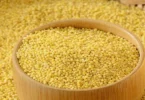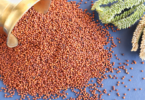In recent years, the popularity of the tropical fruit dragon fruit has grown significantly. The health advantages it offers, like helping with digestive problems and reducing the chance of a blood sugar increase, are what make it so popular. If you have never tried or heard of a dragon fruit, we have made this article to shed light on what it is, its varieties, health benefits, its nutrition facts, and many other things that it can do for you and those around you.
What Is Dragon Fruit?
Dragon fruit, also known as pitaya, is a tropical fruit that belongs to the cactus family. It is native to Central America but is now grown in various parts of the world, including Southeast Asia, Australia, and the United States. The fruit gets its intriguing name from its appearance, which resembles a mythical dragon’s scales.
Dragon fruit comes in different varieties, with the two most common types being the pink-skinned variety and the yellow-skinned variety. The fruit is characterized by its unique shape, typically round or oval, and its vibrant colors. The outer skin is usually bright pink or yellow and has greenish scales or spikes.
The fruit is also a good source of vitamins and minerals, including vitamin C, vitamin E, iron, and magnesium. Additionally, dragon fruit is low in calories, high in fiber and is rich in antioxidants.
Inside the dragon fruit, there is a soft and juicy flesh that can be white or red, depending on the variety. The flesh is studded with tiny black seeds, which are edible and offer a slight crunch when consumed. The flavor of dragon fruit is often described as mildly sweet with a subtle hint of acidity, similar to a combination of kiwi and pear.
What Are The Different Varieties Of Dragon Fruit?
Dragon fruit is available in many different kinds of varieties. The following are the three important ones:
- Hylocereus undatus (pitaya blanca): This type of dragon fruit has pink/red skin, white flesh, and black seeds.
- Hylocereus polyrhizus (pitaya roja): This variety has pink/red skin, red flesh, and black seeds.
- Hylocereus guatemalensis (pitaya amarilla): It has yellow skin, white flesh, and black seeds.
Dragon Fruit Nutritional Facts-
Dragon fruit is not only visually captivating but also packed with various nutrients. Here are the nutritional facts for a serving of 100 grams:
- Calories – 60
- Protein – 1.2 grams
- Carbs – 13 grams
- Fat – 0 grams
- Fiber – 3 grams
- Iron – 4% of the RDI
- Magnesium – 10% of the RDI
What Are The Potential Health Benefits Of Dragon Fruit?
Dragon fruit, with its rich nutritional profile, offers several potential health benefits. Here are some of the key advantages associated with consuming dragon fruit:
Rich In Antioxidant
Dragon fruit is packed with antioxidants, including vitamin C, flavonoids, and betalains. These compounds help neutralize harmful free radicals in the body, reducing oxidative stress and potentially lowering the risk of chronic diseases, such as heart disease and certain cancers.
Boosts Immune System
The high vitamin C content in dragon fruit can boost immune function by supporting the production of white blood cells, which play a crucial role in defending the body against infections and illnesses.
Supports Digestive Health
Dragon fruit is an excellent source of dietary fiber, which aids in digestion, promotes regular bowel movements, and helps prevent constipation. Adequate fiber intake is also linked to a reduced risk of digestive disorders like diverticulitis and colon cancer.
Promotes Heart Health
The fiber, antioxidants, and healthy fats in dragon fruit can contribute to heart health. Dietary fiber helps lower cholesterol levels, while antioxidants combat inflammation and reduce the risk of heart disease. Additionally, the monounsaturated fats in dragon fruit can help maintain healthy cholesterol levels.
Hydration
Dragon fruit has a high water content, which can aid in hydration. Staying properly hydrated is essential for overall health, as it supports various bodily functions, including temperature regulation, nutrient absorption, and joint lubrication.
Skin Health
The antioxidants, vitamins, and hydrating properties of dragon fruit can benefit skin health. Antioxidants help combat oxidative stress, which contributes to skin aging, while vitamin C promotes collagen synthesis for firm and youthful-looking skin.
Diabetes Management
Dragon fruit’s low glycemic index and high fiber content make it a suitable choice for individuals with diabetes. It helps regulate blood sugar levels and improves insulin sensitivity, which can aid in diabetes management.
It’s important to note that while dragon fruit offers potential health benefits, individual responses may vary. Incorporating dragon fruit into a balanced and varied diet, along with a healthy lifestyle, can contribute to overall well-being. Incorporating a variety of fruits and vegetables is key to obtaining a wide range of nutrients and maximizing health benefits.
What Are The Health Risks Of Dragon Fruit?
Dragon fruit is generally considered safe to consume, and the health risks associated with it are minimal. However, there are a few considerations to keep in mind:
Although it seems unlikely, some people may experience an allergic reaction after eating dragon fruit. Stop eating dragon fruit right away if you eat it and experience symptoms of an allergic reaction. Some possible symptoms of a food allergy are Hives, Wheezing, Tingling or itchy feeling in the mouth, Swelling of the lips or tongue, Nausea or vomiting etc.
It is important to note that these risks are relatively rare, and the majority of individuals can enjoy dragon fruit without any adverse effects. As always, if you have specific health concerns or conditions, it is recommended to consult with a healthcare professional before making any significant dietary changes or if you experience any unusual symptoms after consuming dragon fruit.
How To Eat Dragon Fruit?
Eating dragon fruit is a straightforward process. There are several ways to consume dragon fruit. Toss it with other tropical fruits such as pineapple and mango in a fruit salad. To make salsa, chop it up. It can be squeezed into juice or water. Greek yogurt can have it as a topping. You could also freeze it and make a smoothie out of it.
Final Words
Dragon fruit is a tropical fruit that offers a visually stunning appearance and potential health benefits. With its vibrant colors and mild, slightly sweet flavor, it can be enjoyed fresh or incorporated into various dishes. While being low in calories and high in antioxidants, vitamins, and minerals, dragon fruit may contribute to a healthy diet. However, individuals should be aware of potential risks such as allergies and choking hazards. Overall, dragon fruit is a delicious and nutritious addition to a balanced lifestyle.






